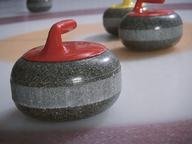Quiz Answer Key and Fun Facts
1. Curling has been around for centuries. In what country was curling generally held to have been developed?
2. Although many people may not have ever had a clue that a sport such as curling existed, its inclusion in the Olympic games gave it international exposure. When was curling first played in the Olympics?
3. How many players are there on each team?
4. Scoring in curling is relatively straight forward, but curling has its own unique terminology. Each team is aiming to get its stones closest to the center of the target area. What is the target area called?
5. The captain of the team has to have a special name. What is the term in curling for the captain of the team?
6. Which of the following is not a name for any curling lines?
7. Which of these is not a reason why a player's teammates sweep the ice in front of their stone?
8. I just touched one of my team's moving stones with my broom while sweeping. What should I do?
9. Who is primarily responsible for enforcing the rules of curling?
10. Now I'm skip of my rink, and we're headed to the rink for a bonspiel. There's one more concept to address before the end begins: the Free Guard Zone (FGZ). The FGZ is the area between the far hog line and the tee line, not including the house. If the first player of a team delivers a stone that ends up in the FGZ, and the next team's player knocks that stone out of play, does the first team get to replace its stone?
Source: Author
abechstein
This quiz was reviewed by FunTrivia editor
Nightmare before going online.
Any errors found in FunTrivia content are routinely corrected through our feedback system.

